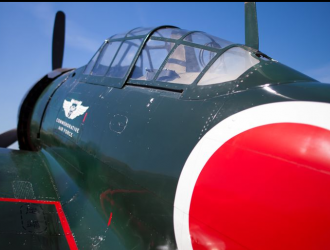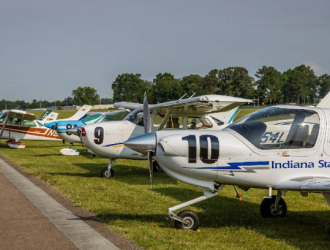
In the general aviation arena, there are many faithful reproductions, but in two specific areas the whole X-Plane simulation game comes up short. This is in business jets and in avionics replication.
There are business jets in X-Plane, but most are useless. One of the benefits of flying a desktop simulator like X-Plane is that it can help familiarize a pilot with a particular aircraft and even practice some maneuvers, including instrument approaches. But cockpits in real business jets are complex, and replicating these flight decks would understandably be a huge undertaking. No one has gone to the trouble. Dden Design’s Challenger 300 perhaps comes closest to replicating a real business jet, but it still lacks full avionics functionality.
In the light aircraft segment, there are many accurate X-Plane models with full avionics functions, but these are simple airplanes with “old-style” cockpits, basic navcoms, DME and simple autopilots. When it comes to complex modern airplanes with Garmin G1000 integrated flight decks, the X-Plane user is left wanting.
There are plenty of X-Plane airplanes with G1000 cockpits, but no designer has been able to add the full functionality of the G1000 system into the simulation. Carenado’s Cirrus SR22 GTSX Turbo and vFlyteAir’s SR20 do a decent job of replicating the Cirrus’s Garmin Perspective flight deck, but you still can’t use the Garmin panel to set up and shoot an instrument approach like in the real airplane. And the MFD’s display is somewhat generic and not much like the real thing. Of course, you can shoot a raw data ILS, LOC or VOR approach and can even do it coupled to the autopilot, which is fantastic, but the flight planning and approach functionality is far from the real airplane’s functionality and thus isn’t very useful to help build muscle memory for practicing flying instrument procedures. There is no way to fly an Rnav approach.
Although I understand that programming a sophisticated flight deck like the G1000 is difficult, I’m pretty sure that part of the problem with doing so is that the designer would have to reverse engineer the system. This has been done, by the way, by manufacturers of advanced aviation training devices (basically fixed-base simulators) and also the brilliant programmer Li Chen Po, founder of Simionic, who has designed fully functioning replications of the G1000 PFD and MFD that run on the iPad and also work on X-Plane, FSX and Prepar3D. That is a lot of work and probably not in the cards for a $27.95 SR20 X-Plane simulation.
But what if avionics manufacturers were willing to share their intellectual property with low-cost simulator designers? Of course I understand that avionics makers have spent millions of dollars developing their products and they are careful about how they share their data, but think of the benefits if low-cost desktop simulators could be used for avionics training and practice.
The FAA is proposing to change the rules that currently require an instructor to be present when logging instrument experience for currency purposes in an approved AATD. There is disagreement in the industry about whether this makes sense, but this rule change won’t be much help if the only devices available for practicing IFR flying other than an airplane are AATDs that cost tens of thousands of dollars. There ought to be a happy medium, perhaps a lower-cost home-type AATD with enough buttons and knobs and software to make the simulation experience more realistic. I know there are devices like Redbird’s $2,595 Jay, but it lacks the real buttons and knobs that are needed to properly practice the repetitions that build muscle memory. If the major avionics manufacturers would help with the software side, it can’t help but benefit the industry as well as introduce many more pilots to their products.



